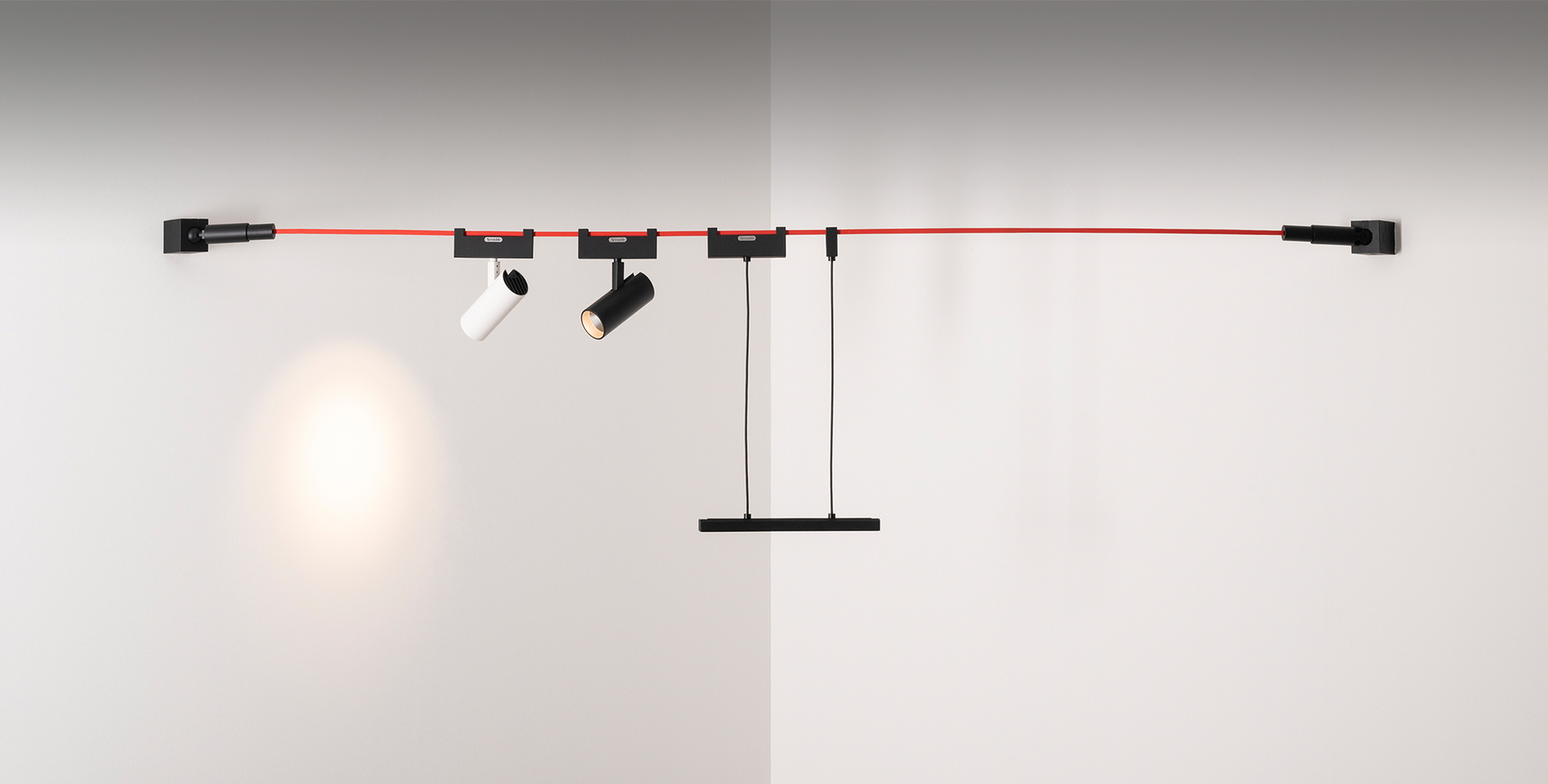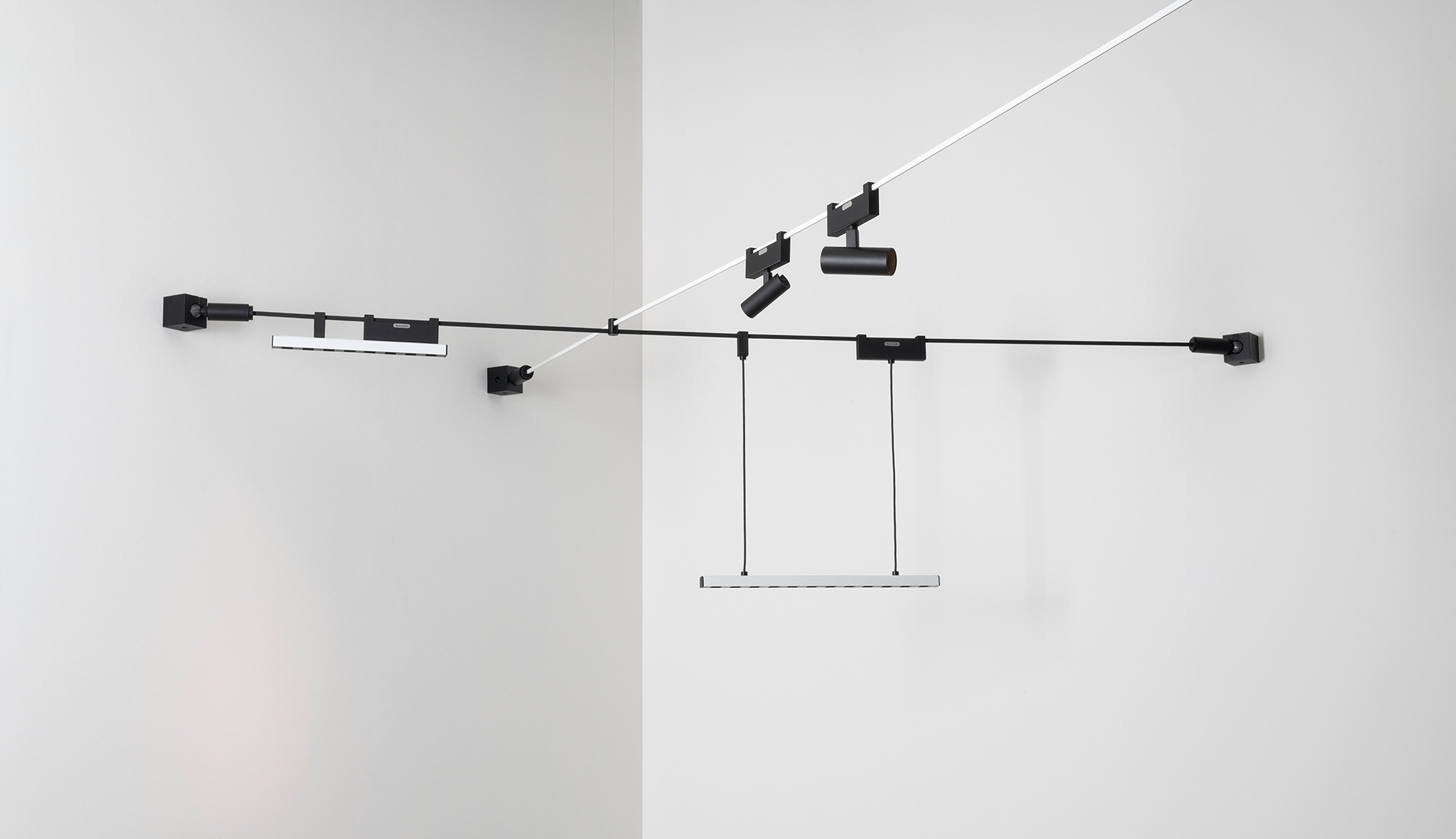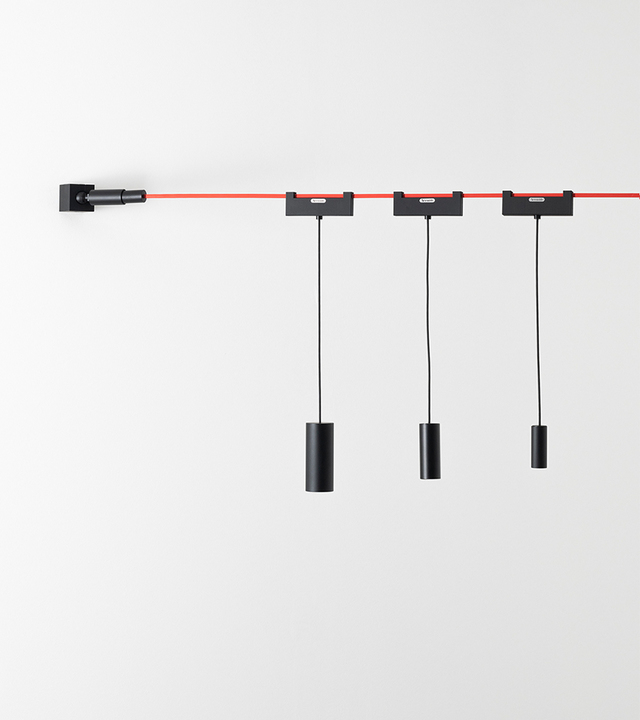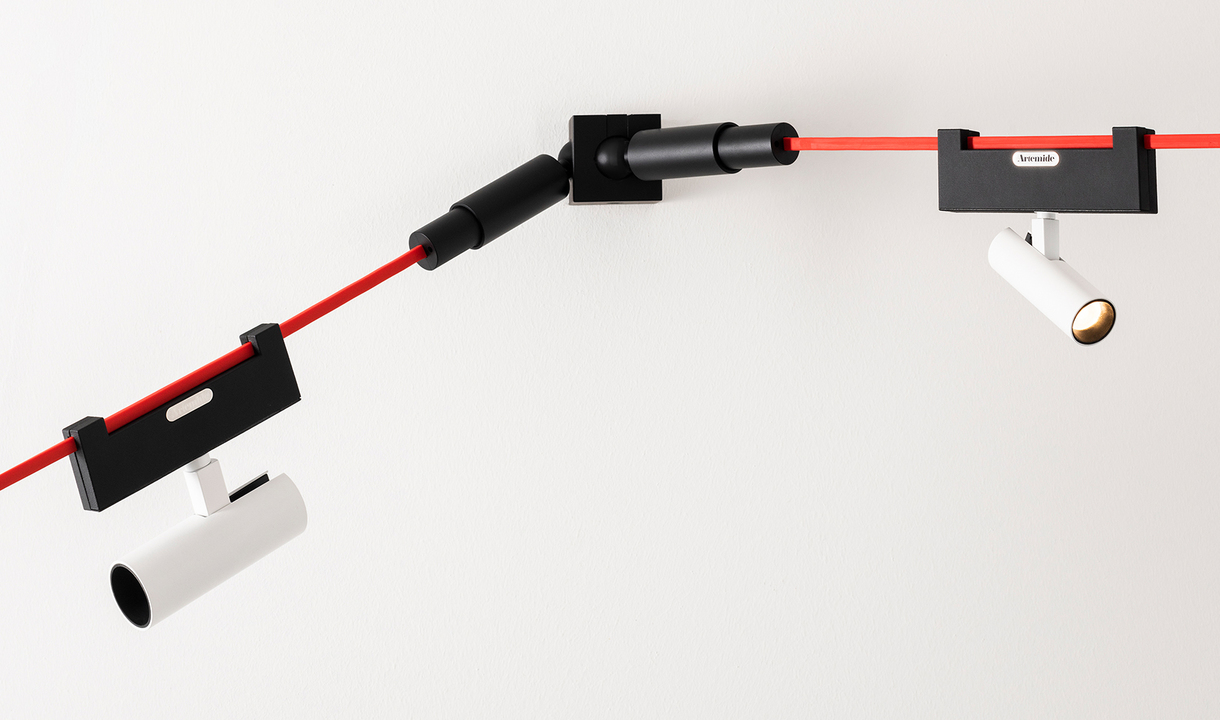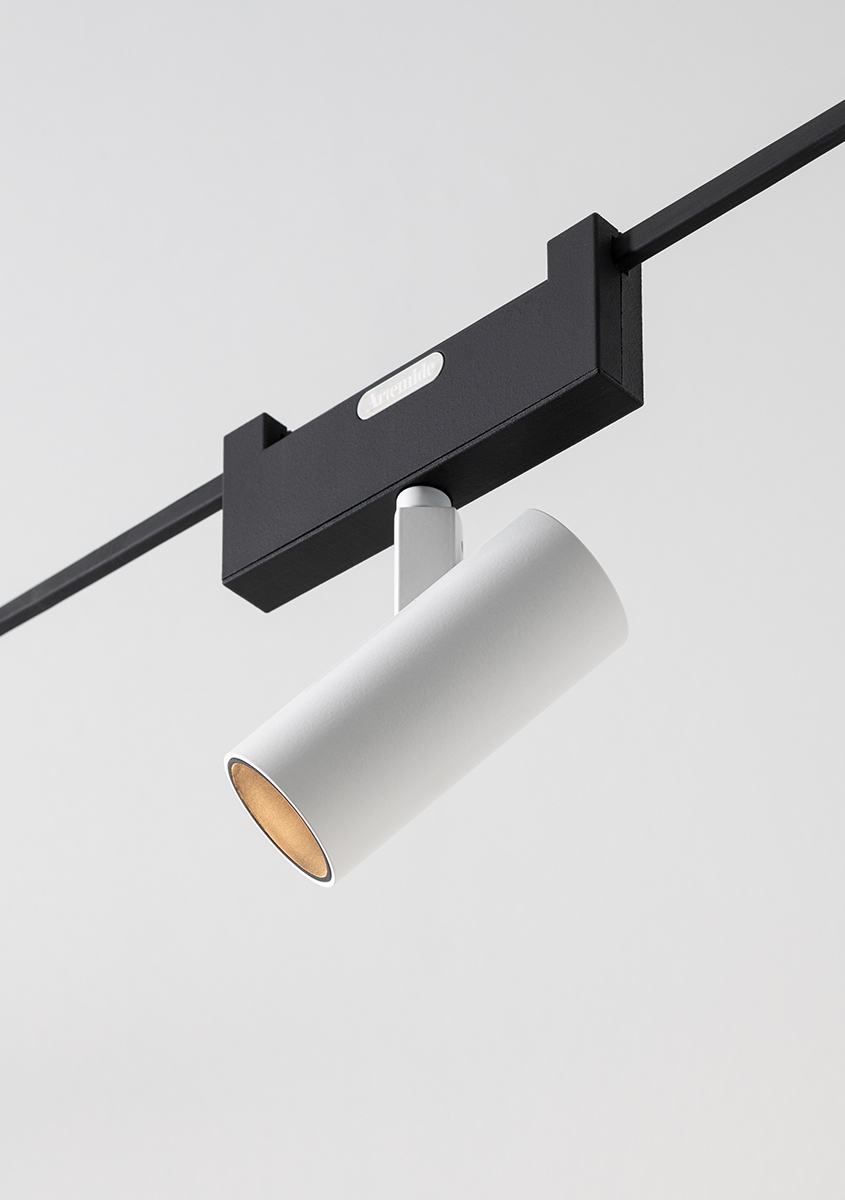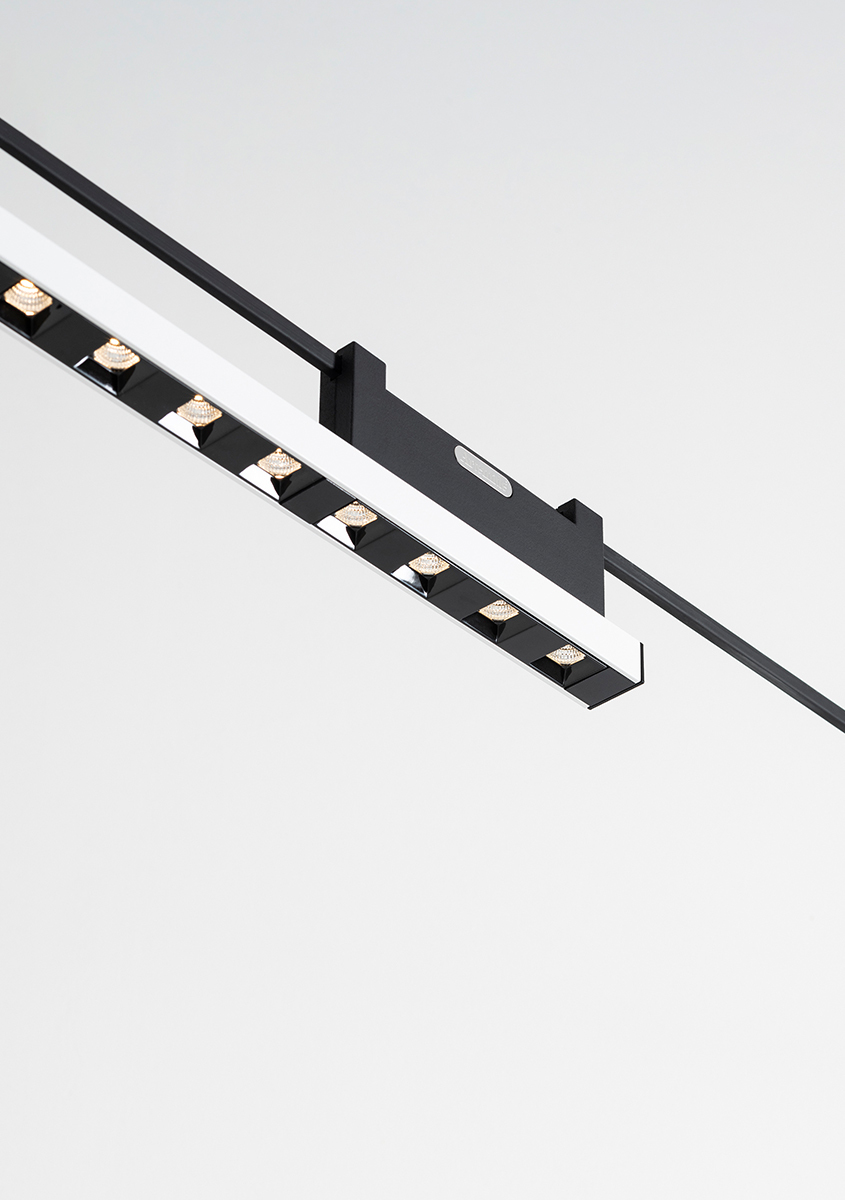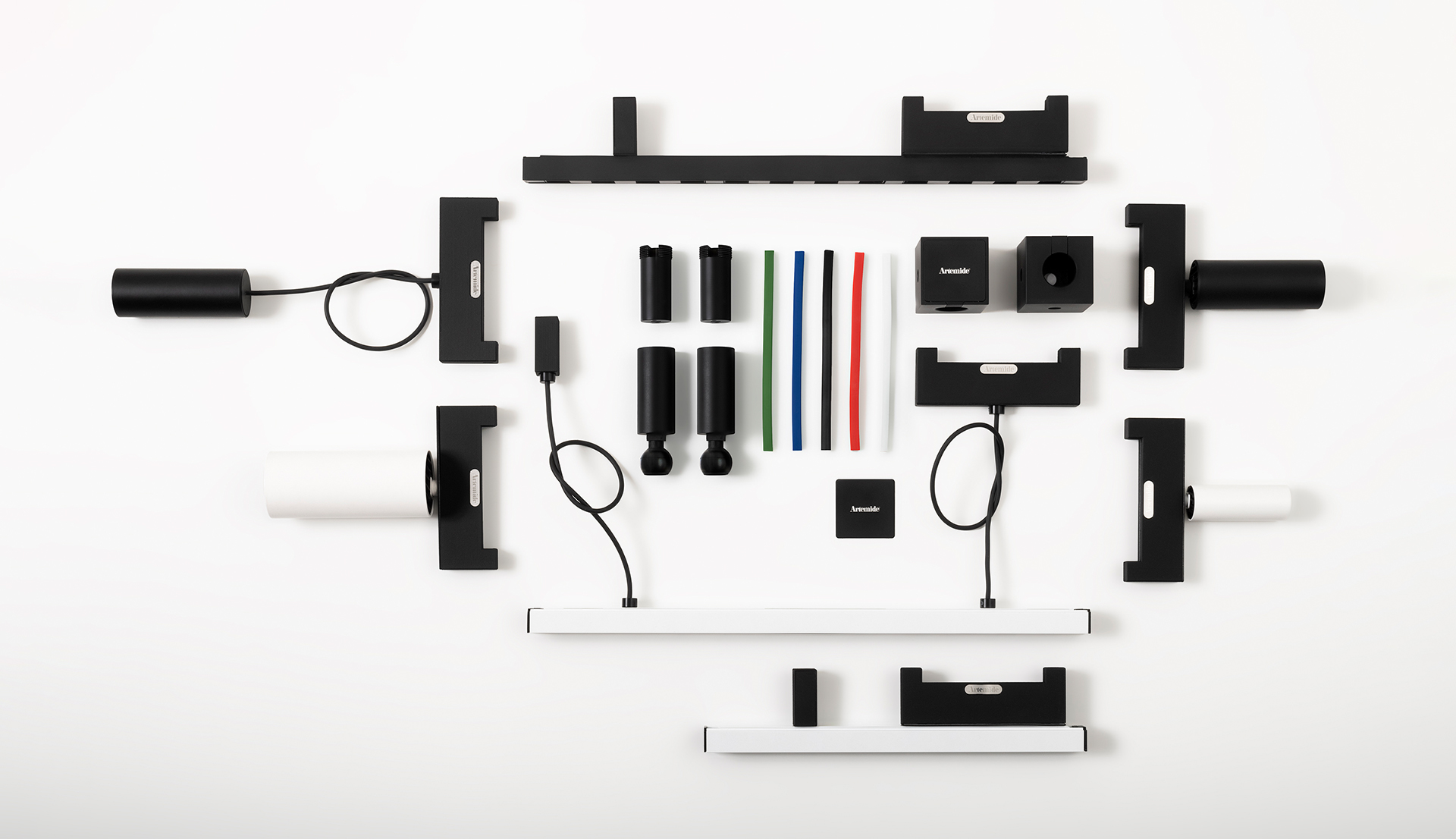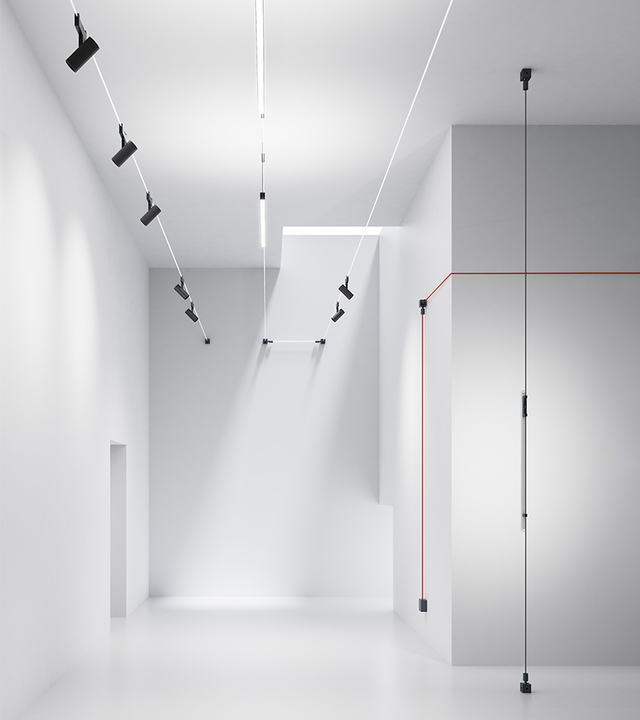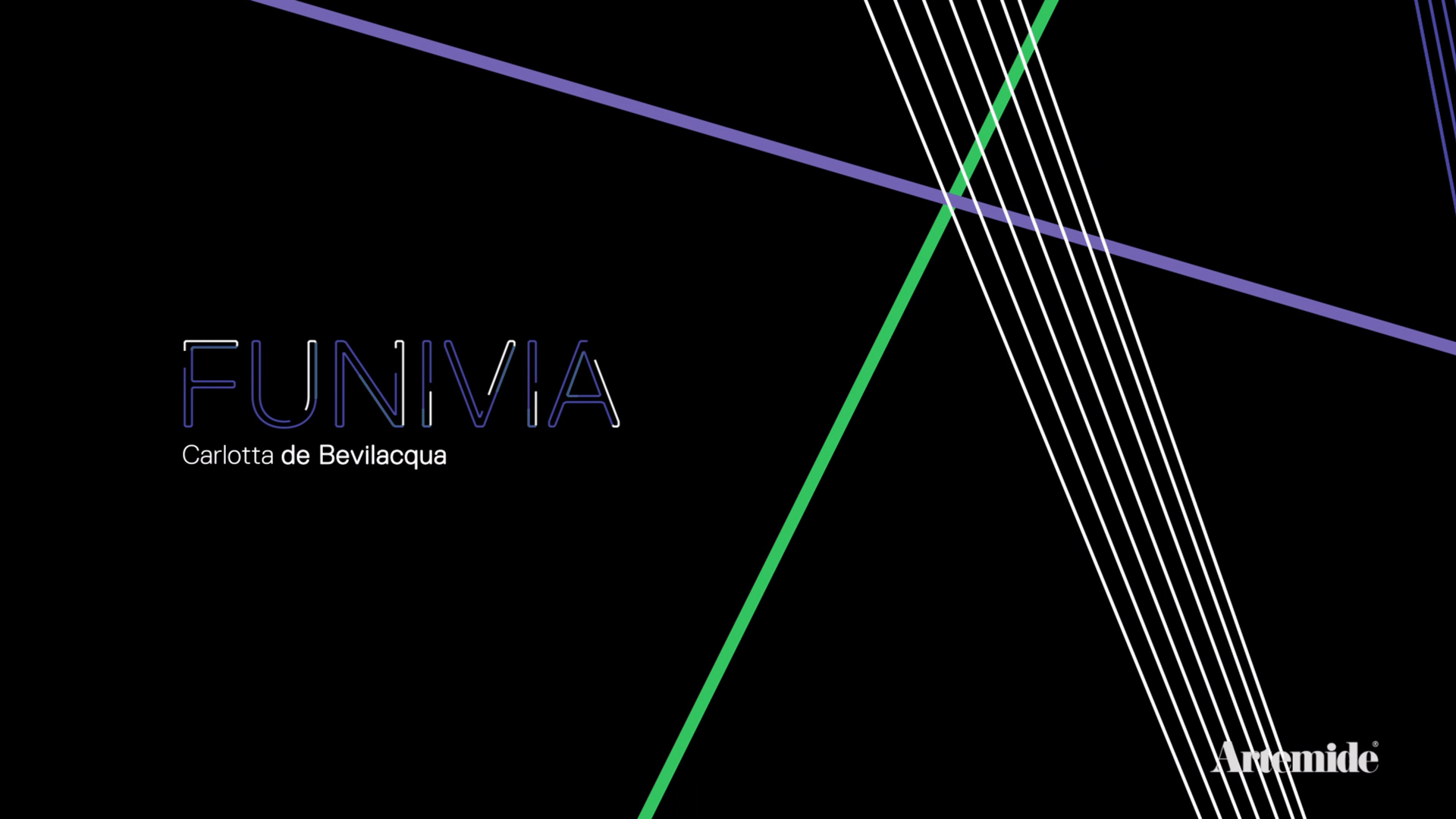It is not bound to an electricity grid or a predefined project; it can enter any space at any time and design light with the utmost freedom; it can generate an extraordinary quality of performance, even without a specific system or intervention in space being envisaged.
A structure is thus created that can integrate light, intelligence, spatial partitions and panels with acoustic properties, to mention just a few.
The light elements are connected to the cable via a “bridge” element, a sort of electricity connection that mechanically fixes the appliance and takes the energy from the cable to power it.
